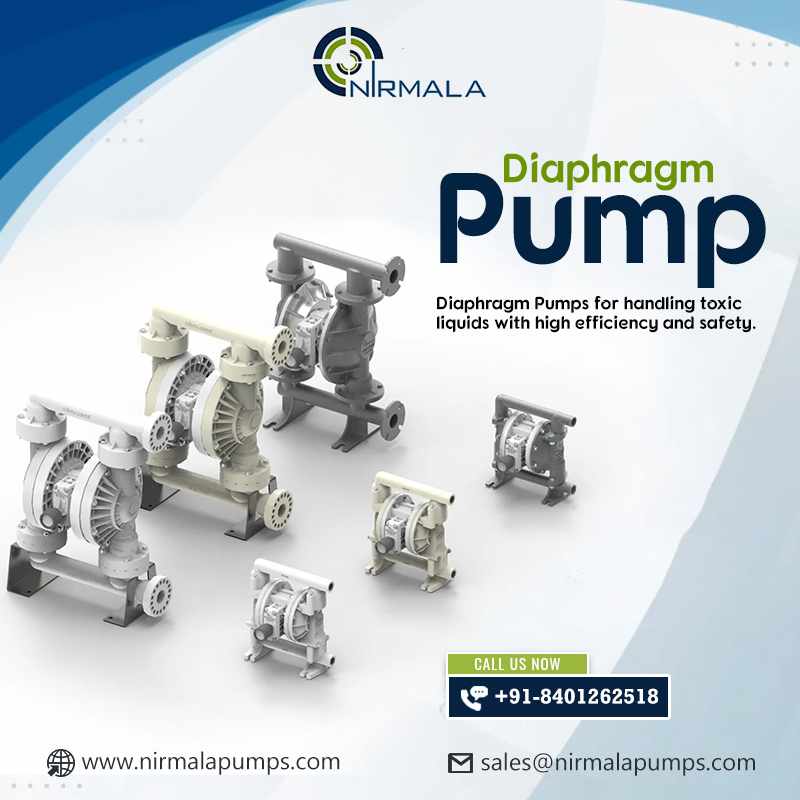
A diaphragm pump's successful performance is typically dependent on correct installation and maintenance. Even a correctly mounted pump may still experience issues such as priming, pressure fluctuations, pulsation, noise, or excessive oil consumption. If you suspect that the pump is not running properly, you must take prompt steps to determine the source of the problem and rectify it.
In this post, we have described the most typical issues that may arise during the regular operation of a diaphragm pump, as well as the steps required to resolve them. Some processes are normal maintenance, while others should be performed by qualified professionals or at approved service locations.
Diaphragm Pump Common Problems and Their Solutions
The pump is not priming or drawing water
When the pump does not prime or draw water, there are usually three reasons:
The control regulator is set to "pressure"
Don't worry; before beginning to remove your pump, always ensure that the control regulator is in "by-pass" mode; this is a common problem caused by inattention.
Problems with the suction line, such as pipes or fittings sucking in air. The whole suction line must next be examined to ensure that pipes and fittings are properly secured.
If the suction line is still intact and functional, you must remove and clean the blocked suction filter.
Low pressure than required
Pressure issues can be created by an RPM speed that is insufficient for the diaphragm pump's technical characteristics; in this instance, just reset the number of revolutions recommended in the handbook to restore the pressure required for proper operation.
If the pressure remains low or equal to zero, the fault is most likely with the nozzles; if the nozzles are old or have a flow rate that exceeds the pump's capacity, they must be changed.
Irregular Pressure
There are various possible causes of irregular pressure:
First, inspect the suction line; if pipes or fittings are sucking air, the pressure within the pump is clearly affected.
The pulsation dampener might be adjusted incorrectly. The dampener absorbs vibrations caused by the oscillating movement of the diaphragms using a pressure chamber. If not properly adjusted, the dampener pressure might impact the pump pressure.
Simply restore the proper pressure within the dampener, and the diaphragm pump pressure will be normal again.
Another possible reason is an incorrectly configured pressure regulator; examine the regulator's pressure setting (and repair or replace it if required).
High Vibrations and Pulsations
If you notice excessive pulsations or vibrations, you should immediately check the pulsation dampener, since this device is designed to minimize pulsations. Every 50 hours of work, you should check the air load inside and, if required, reset the pressure using a pump.
Excessive Noise when the oil level drops
If the pump becomes loud, check the oil level immediately; if it has decreased, the suction line is blocked. Simply examine the suction pipe (particularly the filter) and clear any obstructions.
Excessive oil usage.
If excessive oil consumption results in a milky hue, one or more diaphragms are most likely fractured or damaged.
The diaphragms divide the pumping chamber from the transmission, preventing the pumped fluid from coming into contact with the mechanical parts and the oil. When the diaphragm breaks, the fluid filters into the oil, turning it milky.
To avoid serious damage, all diaphragms and oil must be replaced.
Let us now analyze the potential damage to diaphragms: in the event of a diaphragm breaking, it is critical to determine the cause and take steps to prevent it from happening again.
Two cuts at the suction and discharge valves
This sort of diaphragm pump difficulty can be caused by a variety of factors:
As always, the first step is to check if the suction line is clogged and clean the filter.
Cavitation, which occurs when vapor bubbles develop inside the fluid and collapse, is one of the most prevalent causes of diaphragm failure. There are various important advice for avoiding cavitation. First and foremost, do not pull water from excessive depths (limit 4 meters).
If the liquid is very thick, utilize a water-based liquid.
Always ensure that the suction valve is closed properly and that the liner holes are properly positioned.
Furthermore, chemical aggressiveness may impact the diaphragm; always confirm the compatibility of the diaphragm and the chemical substance being used.
Breakage at the inner diameter and lacerations.
This is a wear-related breakdown; when the diaphragm is utilized for more than 300 hours, the retention disc generates friction, which leads to lacerations. Diaphragms should be replaced every 300 hours or at the start of each season (whichever is shorter).
A semi-circular sharp cut
This cut results from the presence of air in the oil bath beneath the diaphragm. The air was most likely not purged during assembly or repair; thus, the diaphragm must be changed, making sure to expel the air from the diaphragm pump.
Conclusion
Diaphragm pumps can handle a wide range of fluids, flow rates, and viscosities while operating effectively in a number of applications. Nirmala Pumps designs and manufactures double diaphragm pumps that satisfy the needs of industrial sectors all over the world safely. Our technical and sales teams are available to assist with the selection of a new pump as well as to give relevant information and advice on a variety of accessories and replacement parts.







Write a comment ...